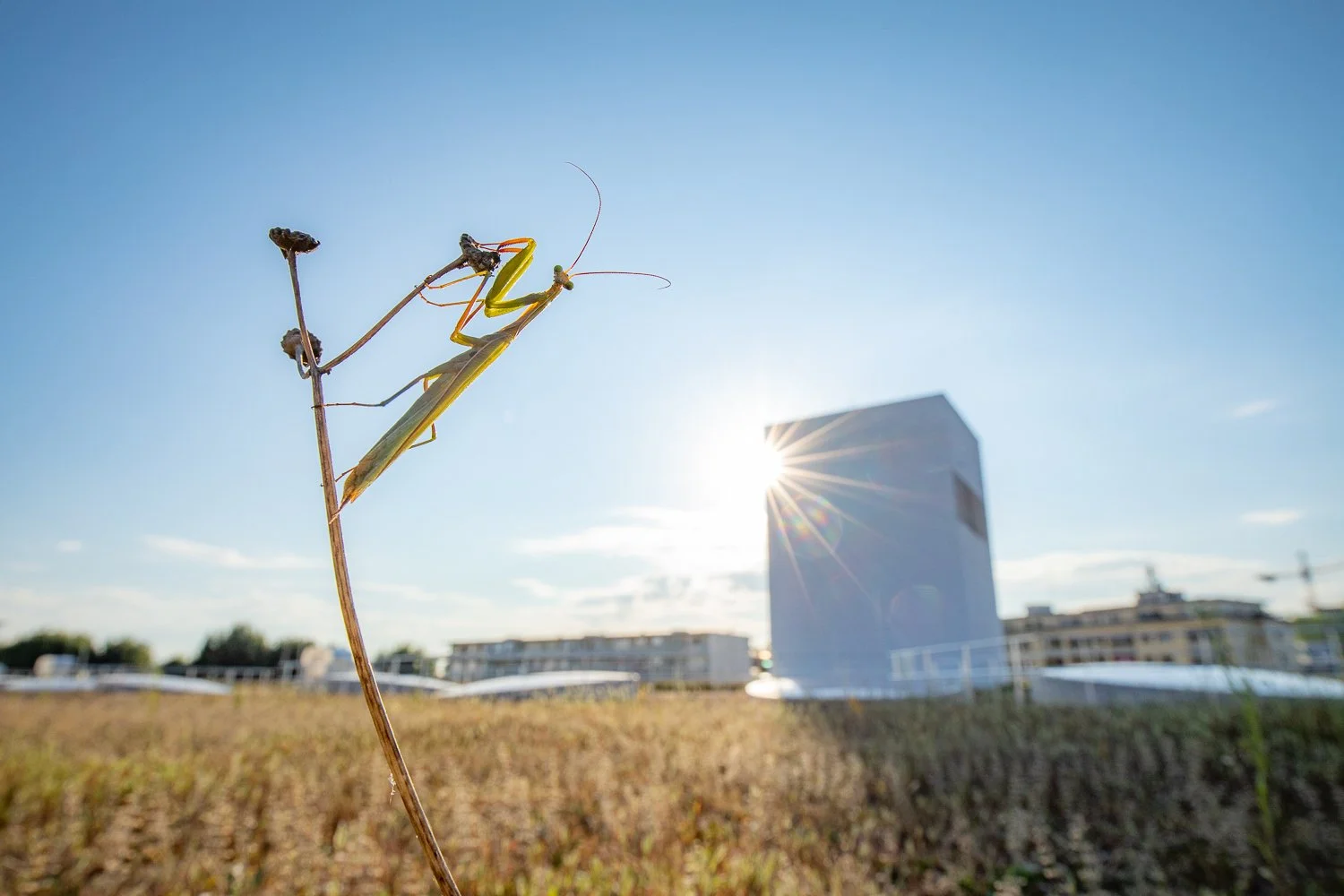Articles
Apps and Software Revolutionizing Biodiversity Monitoring and Climate Advocacy
Discover the best apps and software revolutionizing biodiversity monitoring and climate advocacy. From iNaturalist to Google Lens, these tools help you to identify species, track bird activities, and even monitor coral reef health. Contribute to conservation efforts and connect with nature using these innovative technologies.
Re-innovating Green Roofs for Biodiversity: Seven Steps
To maximize ecosystem services, green roofs are being planted with greater plant diversity to better support biodiversity. This article looks at seven steps to re-innovate green roofs for biodiversity.
Five Reasons to Incorporate Biodiversity into Your Green Infrastructure Designs and How To Begin Doing It
Discover the importance of biodiversity and how to reconnect with it in your living architecture projects. Learn practical steps to incorporate biodiversity and enhance the value of your designs for a sustainable future.
Designing Green Roofs for Dragonflies
Discover how to design biodiverse green roofs that attract and support dragonflies. Learn about the importance of water, stones, and flowering plants in creating dragonfly habitats on green roofs. Explore case studies and expert insights.
Apps and Software Revolutionizing Biodiversity Monitoring and Climate Advocacy
Discover the best apps and software revolutionizing biodiversity monitoring and climate advocacy. From iNaturalist to Google Lens, these tools help you to identify species, track bird activities, and even monitor coral reef health. Contribute to conservation efforts and connect with nature using these innovative technologies.
The Migratory Bird’s-Eye View of Green Roofs - Designing Rooftops for Birds
Discover how green roofs are becoming vital havens for migratory birds in urban environments, offering habitat and protection from deadly collisions with glass. Learn how these innovative rooftops are transforming cities into crucial refueling stations for bird species
Community Driven Biodiversity: The Ayer Devens Main Streets Regional Pocket Forests Project
Pocket Forest Projects based on Miyawaki principles are springing up across North America as a way for communities to engage in biodiversity restoration and climate resilience. The Town of Ayer, Massachusetts provides an outstanding example of the multiple benefits of these projects.
Designing for Biodiversity at Scale: How Ecologists and Landscape Architects Collaborate On Suburban Natural Heritage
In this feature, an area in southern Ontario is reviewed to illustrate the important collaboration between ecologists and landscape architects to produce ecologically-informed landscape plans that can increase the biodiversity of the site, among other benefits. The project priorities are to retain ecology, restore habitats, replace habitats, and to recover species at risk.
Chaos and Complexity – Pushing the Boundaries of Gabion Baskets
Learn about the many benefits of creatively using gabion baskets in your landscape designs from improved waste material management to creating new opportunities to support biodiversity.
Why You Should Incorporate Biodiversity Into Your Next Project
The widespread use of living architecture can help us build more bridges between the artificial and natural worlds, opening up new possibilities for urbanites to connect to nature and support conservation.
Designing Green Roofs for Biodiversity
Thoughtful green infrastructure projects, including green roofs and living walls, are one important strategy to provide crucial habitat in cities. Although many specifics vary by region and climate, there are several basic things to consider when designing for biodiversity on green roofs and other green infrastructure.
Cutting Edge Policy in England Requires New Buildings To Incorporate Biodiversity
Dusty Gedge explains how new policies enacted in England promise to improve biodiversity by measuring the biodiversity related impacts of development and requiring a net gain in biodiversity – good news for green roofs.
Urban Biodiversity Targets Lay the Ground for Holistic Exploitation of Rooftops in European Cities
Back in May 2020, the European Union presented its biodiversity strategy for 2030 – a comprehensive plan to protect nature, reverse the degradation of ecosystems and put Europe's biodiversity on a path to recovery by 2030.
Grasses: Living Roofs for Native Pollinators Part III
When designing a living roof for a particular kind of habitat for wildlife, it is important to know that some forms of wildlife (i.e., specialists) are dependent upon a specific species of grass for its development while generalists can be served by multiple species of grasses.
What is a Biodiverse Green Roof?
Biodiversity should not be viewed as a project afterthought but should be at the forefront of all city and project planning. Green roofs should be as biodiverse as possible given project constraints.
On the Roof With The Father of Green Roof Biodiversity Research
Dr. Stephan Brenneisen, the father of green roof and biodiversity research discusses how to design green roofs for biodiversity, green roof policy in Basel Switzerland and his future plans.
Wildflowers: Planting Living Roofs for Native Pollinators Part II
Want to help pollinators? This article provides you with the reasons for supporting pollinators as well as detailed information of families of plants that can support a wide range of pollinators across North America on green roofs.
Musings on a Fully Mature Green Roof Market
Ed Snodgrass, a true pioneer in the green roof industry, shares his vision of what it means to have a fully mature green roof market.
Planting Living Roofs for Native Pollinators (Part I: Sedums)
Green roofs can recover space for pollinators in dense urban environments, where native ecosystems once persisted. This article is the first of several that will focus on the unique role of living roofs made for the preservation of native pollinators - looking at Sedums in particular.
Four Approaches to Making Living Roofs With Native Plants
There is a great potential for and an essential role for making green roofs with native plants. If conservation practices are not taking place at the ground level, or if the native plant communities have already been significantly altered, then living roofs may provide a last chance to support the ecological heritage of the region. This article explores four approaches to make living roofs with native plants.



















